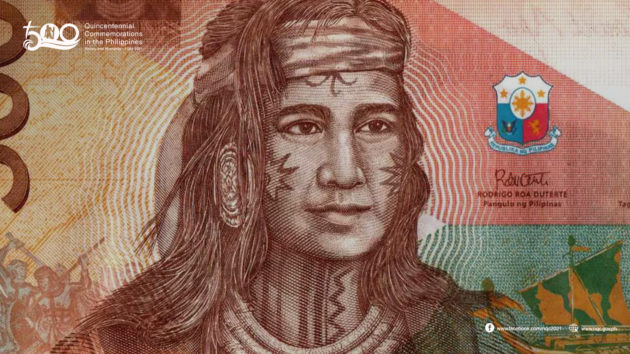Lapulapu versus Lapu-Lapu
Posted on 22 January 2021
By National Quincentennial Committee

In the comprehensive plan it submitted to President Rodrigo Roa Duterte on 29 January 2019, the National Quincentennial Committee (NQC) made a stand on the name of the ruler of Mactan: that it should be written as Lapulapu (without hyphen). The NQC cited for its basis the recorded name of the historical figure found in Antonio Pigafetta’s chronicle of the Magellan-Elcano expedition: Çilapulapu. “With the consent of the NHCP (National Historical Commission of the Philippines),” the comprehensive plan reads, “the NQC will use ‘Lapulapu’ (without the hyphen) as the name of the Mactan leader.”
The NQC explains that the “Çi” in the recorded name of the Mactan leader is most likely the ancient honorific title ‘Si.’ Citing past scholars, the NQC added that “‘Si’ was an indigenized form of the Hindu title ‘Sri’ (‘gentleman’ in Sanskrit) to refer to a nobleman.” (Other variations of ‘Sri’ are sari, seri, and sali.) Scholars Trinidad H. Pardo de Tavera and William Henry Scott observed this as a recurring prefix in various historic names recorded during the early colonial period.
Aside from Lapulapu, other recorded historical figures who bore the particle “Si” in their names were Rajah Siaui of Butuan (also recorded in Pigafetta’s chronicle); Sicatuna of Bohol, with whom Miguel Lopez de Legazpi had blood compact in 1565; and Si Bunao of Tondo, popularly known as Lakan Dula, based on Legazpi’s 1572 report to the governor of Nueva España (present-day Mexico). Other recorded indigenized forms of ‘Sri’ (e.g., sari, sala, seri) appeared in the name of the 12th century Butuan ruler Sari Bata Shaja, as recorded in Chinese annals; Saripada, a known Muslim name in Mindanao and Borneo; Salalila (Seri Lela in Bornean Tarsila or genealogical record), the father of Rajah Matanda and Lakan Dula as recorded in the 1589 last will and testament of Fernando Malang Balagtas; and Phelipe Salalila, chief of Tondo, one of the members of the Tondo Conspiracy of 1587-1588, a plot to overthrow the Spanish colonial government.
Lapulapu sa Mata ng mga Bayani | Lapulapu in the Eyes of Heroes
Know how Lapulapu was imagined by our heroes like Rizal and the founders of the Filipino nation in Kawit in 1898. This is one of the educational video series…
The NQC has to clarify the name of Lapulapu because he “will be the central figure of the quincentennial,” and that having two names for the hero will just confuse our countrymen. The NQC also pointed out that the NHCP has been consistent in referring to the historical figure as Lapulapu. Evidence of this is the 1951 historical marker the Philippines Historical Committee (forerunner of the NHCP) installed at the Liberty Shrine in Lapu-Lapu City.
The NQC’s position on the name Lapulapu will help the Philippine Congress and the Office of the President in determining the proper spelling of the name of the Mactan leader when he is honored in the proposed renaming of the Mactan-Cebu International Airport either as Lapulapu-Cebu International Airport or Lapulapu International Airport.
Nonetheless, the NQC will continue to respect the way Lapulapu is spelled in past books and popular readings. What the NQC and the NHCP would like is for the Filipino people to first and foremost, stick to what is written in the historical documents.
Further readings
Escalante, Rene R. National Quincentennial Committee Comprehensive Plan. Manila: National Historical Commission of the Philippines, 2019.
Francisco, Juan R. Indian Influences in the Philippines: With Special Reference to Language and Literature. Quezon City: University of the Philippines, 1964.
Pardo de Tavera, Trinidad H. El Sanscrito en la Lengua Tagalog. Paris: Imprimerie de la Faculte de Medicine, 1887.
Scott, William Henry. Looking for the Prehispanic Filipino and Other Essays in Philippine History. Quezon City: New Day Publishers, 1992.
_____. Prehispanic Source Materials for the Study of Philippine History. Quezon City: New Day Publishers, 1984.

